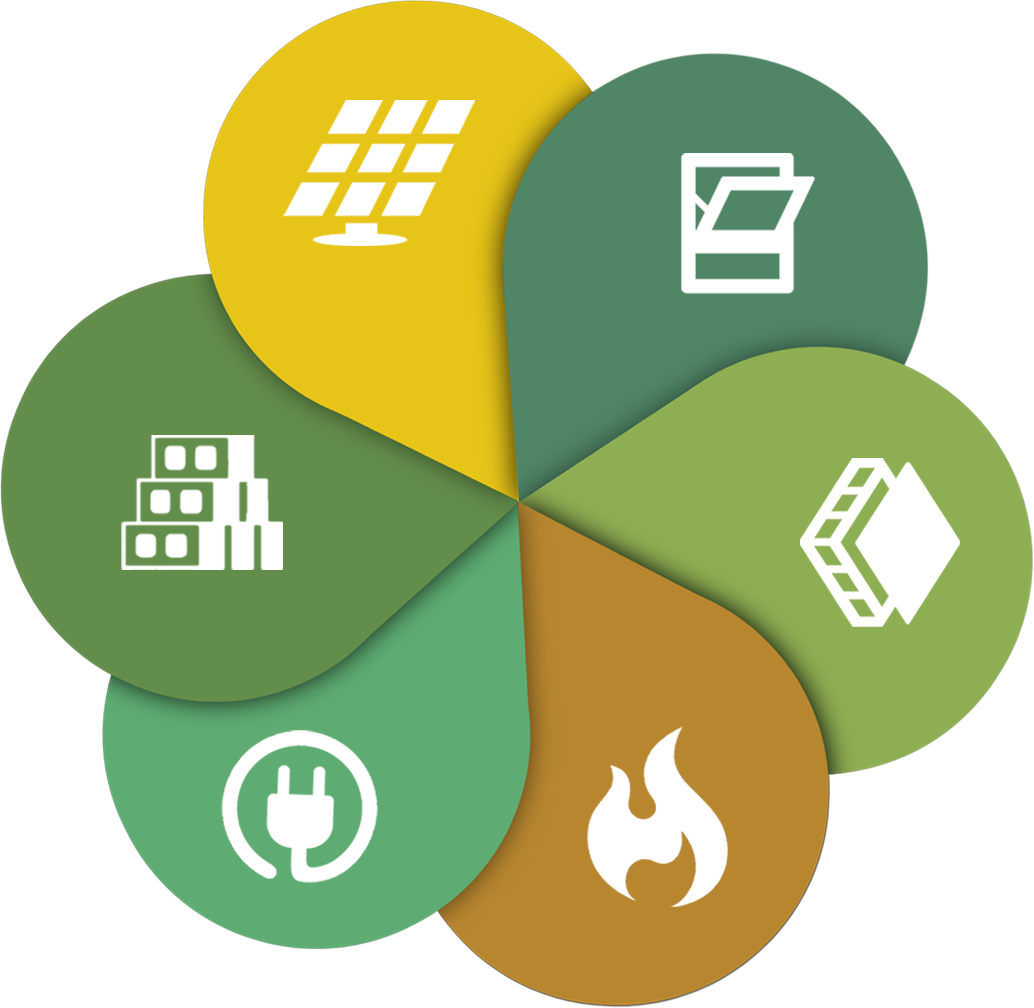A toolbox for the 21st century—and beyond.
The working parts of your zero-carbon house are served by integrative design.
Builders and homeowners alike have long waited for design and construction practices to catch up with fast-advancing sustainability technologies.
Not only is the waiting over, but these new practices are proving to complement each other, adding up to more than the sum of their parts.
In every aspect of today’s approach to residential building, factors like solar orientation, window efficiency, continuous insulation, heat recovery, electrification, and choice of building materials play a central role.
Capitalizing on the benefits of sunlight by solar orientation involves a number of construction-phase strategies that consider the sun’s shifting path across the sky. These range from “daylighting” your home by the ideal situation of windows, skylights, and light-shelves, to the placement of photovoltaic panels, reflective surfaces, and shading applications.
When it comes to heat loss, windows are a main culprit, and high window efficiency is critical to combating it. Windows with robust insulation properties like double- or triple-glazing are key, as are frame materials with low-emissivity (”Low-E”) coatings, and high-quality weather stripping to prevent air leakage.
As opposed to merely placing insulation between a house’s framing members, continuous insulation creates a robust thermal barrier by wrapping the entire exterior in insulation. This approach is supercharged by ensuring sufficient depth-of-cavity for the application of cellulosic materials, allowing for vapor migration while preventing heat transfer through walls.
Today’s heat recovery ventilation systems perform 20% better than they did just three years ago. In addition to capturing heat and combining it with fresh air, an Energy Recovery System, or ERV, regulates moisture and saves energy. It also safeguards your family’s health: along with independent ducting—which separates exhaust from fresh air—ERVs improve the quality of the air you breathe.
The advantages to electrification extend to nearly every aspect of your home. Heat pumps work year-round by extracting heat from the air or ground and using it to heat—or cool—the house’s air and water. Comprehensive PV systems can combine with advanced battery technology to power an entire house for up to five days.
Choosing building materials with high insulation and thermal mass values goes a long way toward meeting RESNET (Residential Energy Services Network) standards. These include everything from mass timber, rammed earth, and insulated concrete forms to reclaimed wood, recycled glass and salvaged steel—all of which are often used in high-design houses.
Interested in learning more about these tools? We love to talk about them.








